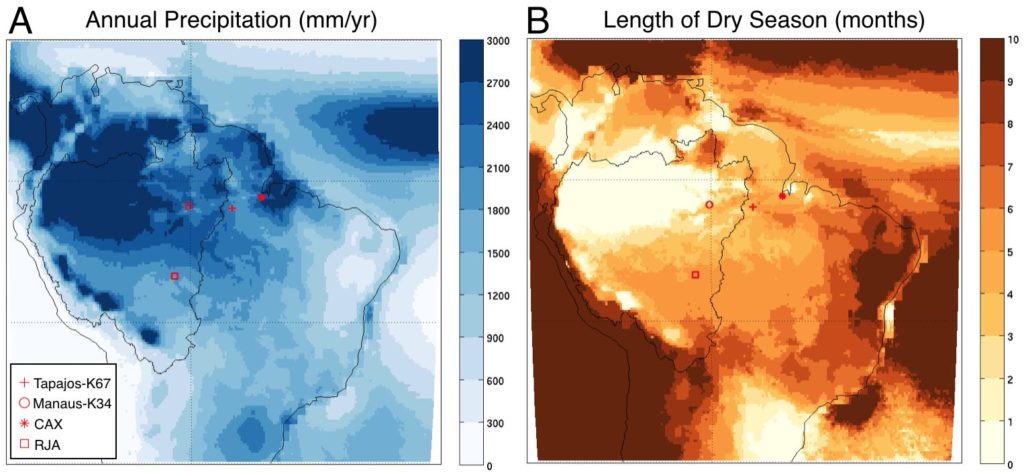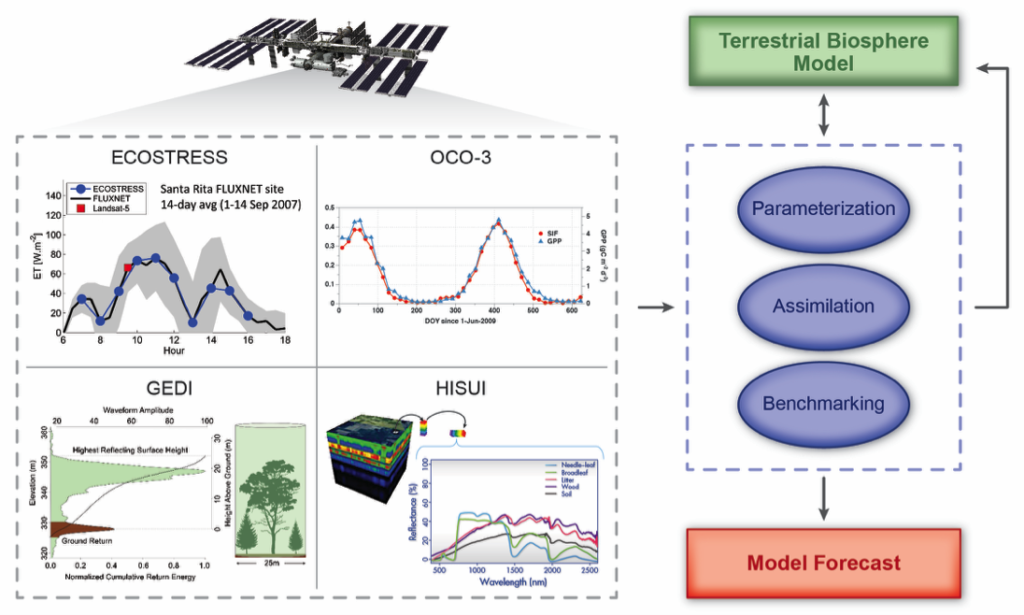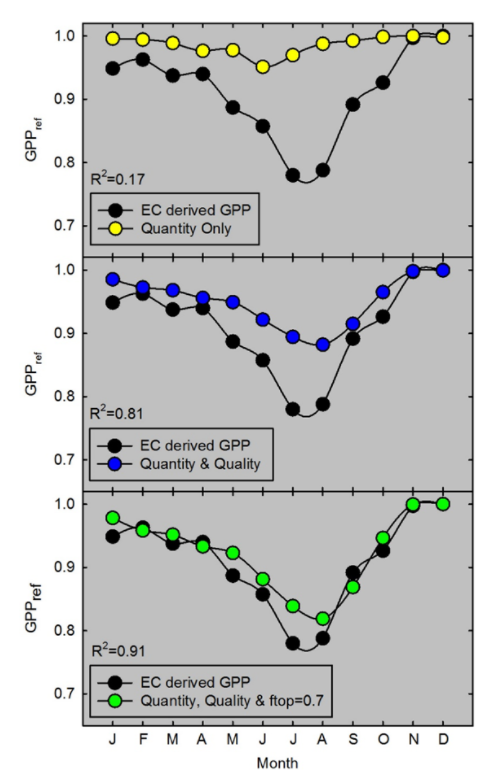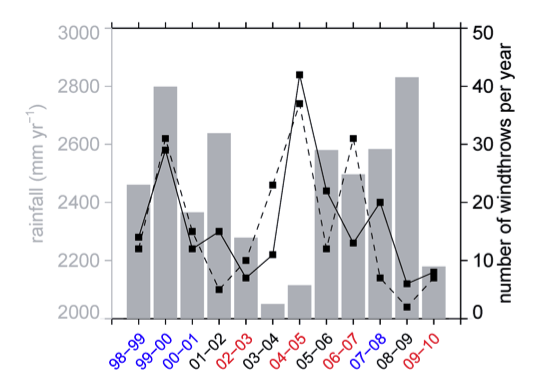Plant hydraulic architecture underpins sorting of species along edaphic gradients.
The Science
We provide a scientific commentary on intriguing new results from the Amazon suggesting that plant hydraulic traits mediate the sorting of species along edaphic gradients of water availability (i.e., beta diversity). We highlight emerging research needs, questions and priorities related to the study of this so-called ‘trait-mediated environmental filtering’ as it relates to plant hydraulics.
The Impact
The study upon which our commentary is based (Cosme et al., 2017, “The importance of hydraulic architecture to the distribution patterns of trees in a central Amazonian forest,” New Phytologist 215(1): 113-125) showed that evergreen valley tree species have significantly greater xylem vessel diameters than their plateau counterparts of the same genus. It is commonly thought that plants face a trade-off in water transport versus hydraulic safety (risk of failure of the transport system). In our commentary on this article, we highlight the complexities associated with this trade off and how it maps onto contrasting hydrological regimes of plateau and valley habitats. We emphasize that with the advent of climate change and changing precipitation regimes, it is increasingly critical to understand how plant hydraulic traits translate into plant performance, and ultimately, the competitive outcomes of plants with distinct sets of hydraulic traits which give rise to beta diversity in tropical forests. Developing a mechanistic understanding of beta diversity in tropical forests will enhance our predictive capability of tropical forests to climate change.
Summary
Because the rate of a plant water transport is proportional to xylem vessel diameter but the safety of such transport (risk of failure of the transport system) is inversely proportional, Cosme et al. suggest that species in valley habitats will prioritize transport capacity while those in plateau habitats will prioritize safety. Such a hypothesis was supported by their results. We highlight that the assumption of valley habitats as more hydrologically favorable and stable in time may not always be true; the sandy, rapidly draining soils and shallow rooting habits of valley habitats may promote both more plant hydraulic stress during dry periods and greater variability overall when compared to plateau habitats. This alternative perspective of valley and plateau habitats is consistent with other traits observed by Cosme et al. to be different in these habitats, such as wood density. We emphasize the value of Cosme et al.’s results for model development — namely, as a benchmark for models in which trait assemblages are emergent, rather than prescribed. We also highlight key ecohydrological measurements that are needed to resolve how plants respond to the favorability and stability of hydrologic regimes in these contrasting edaphic habitats in tropical forests.
Contacts (BER PM): Daniel Stover and Jared DeForest, SC-23.1, Daniel.Stover@science.doe.gov (301-903-0289) and Jared.DeForest@science.doe.gov (301-903-1678)
PI Contact: Bradley Christoffersen, Earth and Environmental Sciences Division, Los Alamos National Laboratory, bradley@lanl.gov
Funding
B.C. and N.G.M. acknowledge support from the Next-Generation Ecosystem Experiments (NGEE-Tropics) project, funded by the US Department of Energy, Office of Biological and Environmental Research. P.M. acknowledges support from NE/J011002/1 (NERC, UK) and FT110100457 and DP170104091 (ARC, Australia).
Publications
Christoffersen, B., Meir, P. & McDowell, N. G. Linking plant hydraulics and beta diversity in tropical forests. New Phytologist 215, 12-14, doi:10.1111/nph.14601 (2017).
Cosme, L. H. M., Schietti, J., Costa, F. R. C. & Oliveira, R. S. The importance of hydraulic architecture to the distribution patterns of trees in a central Amazonian forest. New Phytologist 215, 113-125, doi:10.1111/nph.14508 (2017).
 Figure 1. Maps showing (A) the annual mean precipitation in mm/yr, and (B) the length of the dry season in months where blue colors indicate wetter conditions and red and brown colors indicated drier conditions. An outline of the basin used in this analysis—the Amazon basin upstream of the gauging station at Óbidos—is shown in the black outline. Red markers indicate the location of four flux towers near the region from Wu et al. (2016).
Figure 1. Maps showing (A) the annual mean precipitation in mm/yr, and (B) the length of the dry season in months where blue colors indicate wetter conditions and red and brown colors indicated drier conditions. An outline of the basin used in this analysis—the Amazon basin upstream of the gauging station at Óbidos—is shown in the black outline. Red markers indicate the location of four flux towers near the region from Wu et al. (2016).


